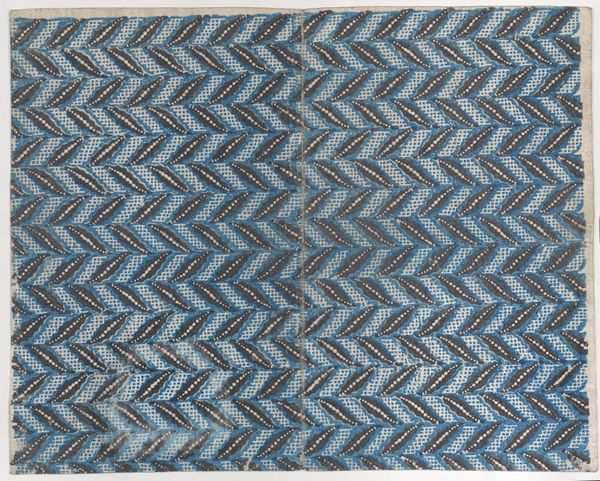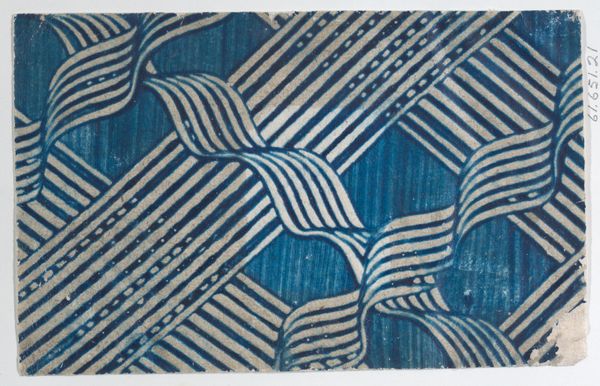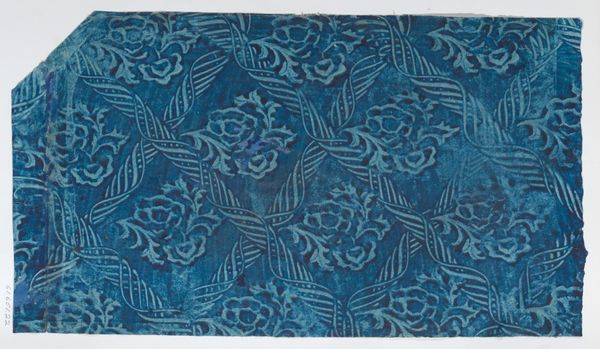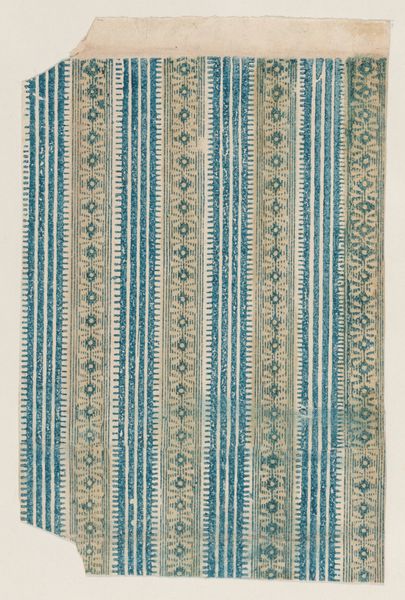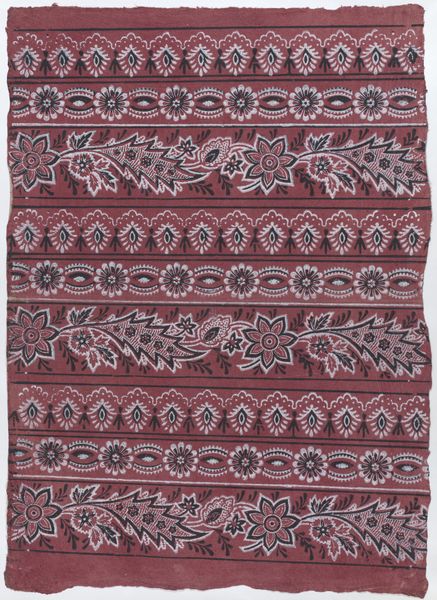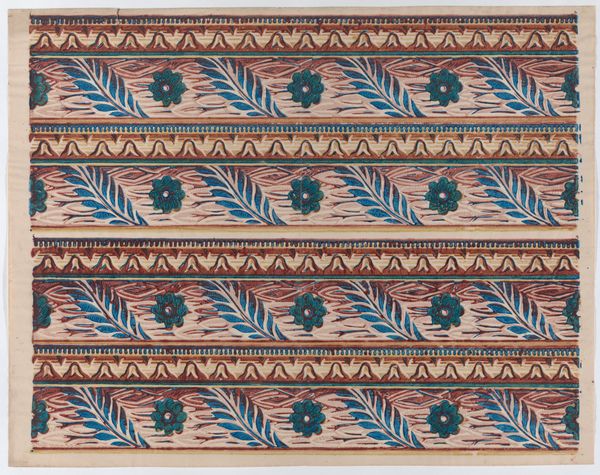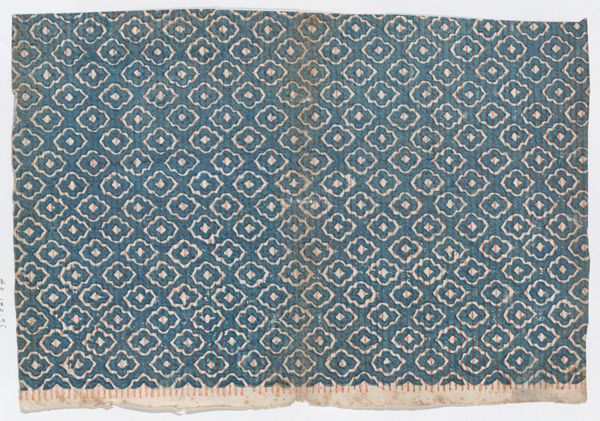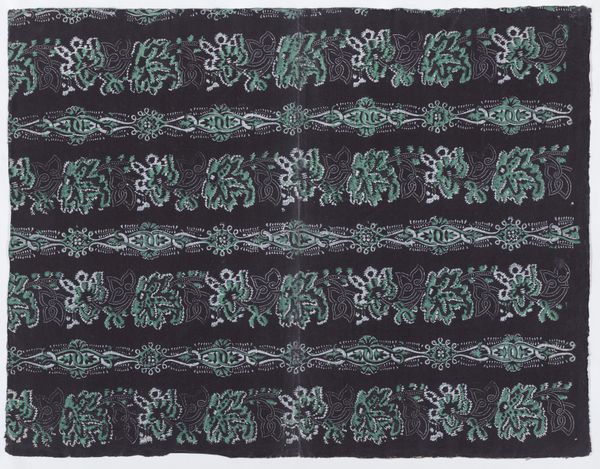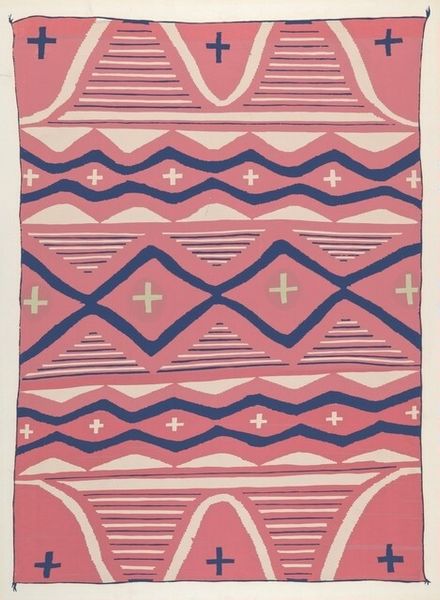
Book cover with overall fruit and floral pattern 1800 - 1900
0:00
0:00
drawing, print
#
drawing
#
organic
# print
#
organic pattern
#
pattern repetition
Dimensions: Sheet: 13 3/4 × 19 13/16 in. (35 × 50.3 cm)
Copyright: Public Domain
Curator: Let’s examine this striking book cover design. It’s called “Book cover with overall fruit and floral pattern,” created anonymously, likely sometime between 1800 and 1900. Editor: Oh, it’s delightfully aquatic! Like something found in a dreamy tide pool, all wavy lines and blooming… underwater cabbages? Curator: More accurately, it presents an organic pattern achieved through a type of drawing or printmaking. Note the careful repetition. The choice of a limited palette probably reflects available pigments and printing technologies of the era, indicating mass production possibilities. Editor: But see how the pattern isn't perfect? Each cabbage, or...artichoke, has a little wobble, a little unique character. It saves it from being sterile. It’s a reminder that even patterns have a maker behind them, with quirks, flaws, maybe a bit of rebelliousness. Curator: Indeed. And this handcrafted feel adds to the charm. It complicates our understanding of mechanization during that period, as we can see handiwork persists and informs consumer products. What story do you imagine the book contained within this cover was telling? Editor: Something a bit mystical, I think, or maybe a forgotten book of spells of water and soil, growth and decay. Maybe the book of a garden gnome? You know, now I wonder if the designer found these patterns within nature or was inspired by fabric patterns—there's a similarity, like it was an evolution of domestic crafts finding their way onto the printed page. Curator: Interesting consideration, pointing towards potential artistic dialogues of the period, between “fine art” and practical, often domestic, designs of the era. Editor: Absolutely, it's these types of intersections that breathe fresh perspective and appreciation of everyday items, inviting consideration on a whole process instead of individual geniuses!
Comments
No comments
Be the first to comment and join the conversation on the ultimate creative platform.
